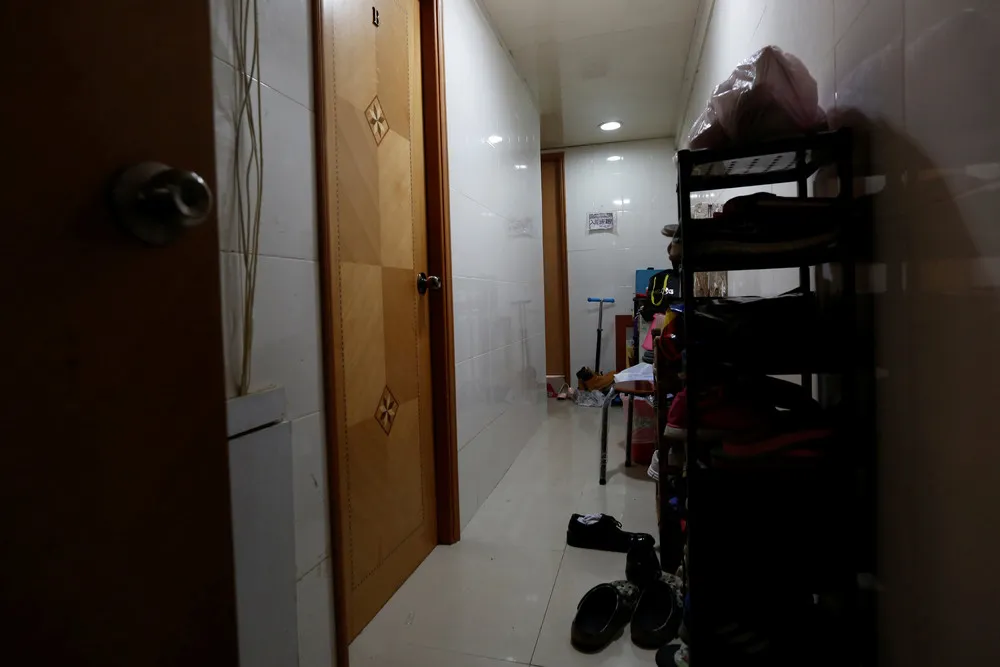|
A corridor shared by four sub-divided units is seen in Hong Kong, China January 6, 2017. For part-time furniture mover Kong Ngai-lam, 26, home is the bottom half of a bunk bed inside a tiny room that fits little else. Nearly 200,000 Hong Kong residents like him call a wire cage or bed in partitioned apartments their home. Making housing more affordable was among outgoing Hong Kong leader Leung Chun-ying's top priorities when he took office in 2012, but his administration has been unable to rein in skyrocketing prices that have added to discontent in the city. Property prices have surged nearly 50% to historic highs since he took office, according to government data, and tiny living spaces have become increasin gly common. About 100,000 people under the age of 35, including children, make up half of those occupying such partitioned units, a government report showed. Non-government organisations say the real numbers are higher. These units, measuring half the size of a standard car park space at an average of 62.4 square feet (5.8 square metres), are getting more expensive too. Median rents surged 10.5% to HK$4,200 (US$520) in 2015, official data showed. The figure is greater than the 8.4% rent increase in private homes over the same period. “Mini flats” or “mosquito flats” are a growing trend as developers target first-time buyers who have given up hope of ever owning a decent-sized home. (Photo by Bobby Yip/Reuters)
|

